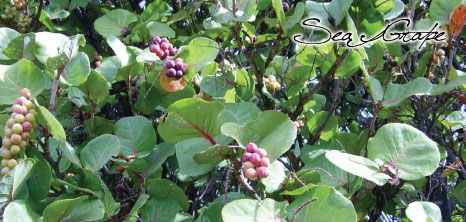|
|
| • | The wood can be used for furniture, while the bark resins can be used for the tanning or dyeing |
| • | The bark resin is also used against throat ailments while the root is used against dysentery |
| • | Phytochemical - Studies show the chemical composition of Sea Grape as: Alpha-Amyrin (antitumor, cytotoxic), chrysophanol (antiseptic, bactericial, cathartic, hemostat, purgative), emodin (anti-aggregant, antiinflammatory, antitumore, antiulcer, immunosuppressive, viricide), physcion (antiseptic, cathartic, purgative), rhein, anticarcinomic, antitumore, fungicide), royleanone, beta-sitosterol (hypoglycemic, hypolipidemic, hypocholesterolemic, hepatoprotective) |
| • | Glucose Lowering - Case studies have shown glucose lowering effect with daily ingestion of tea brewed from Sea Grape leaves. There is concern for lowering the blood sugar too much, especially with concurrent use of pharmaceutical hypoglycemics |
| • | Photoprotective / Antioxidant - Sea Grape showed antioxidant and anti-tyrosinase activities and also inhibited the production of interleukin-1a and TNF-a and a-MSH in melanocytes subjected to UV radiation |
| • | Antibacterial / Antifungal / Phytochemicals - Study yielded flavonoids, saponins, polyphenols and tannins. Ethanolic and methanol extracts inhibited the growth of E coli and P aeruginosa and showed antifungal activity against C albicans, Fusarium oxysporum and F. decencellulare |
At one point in time in Barbados, the Sea Grape leaf was shaped into a cone to wrap Sea Egg.



